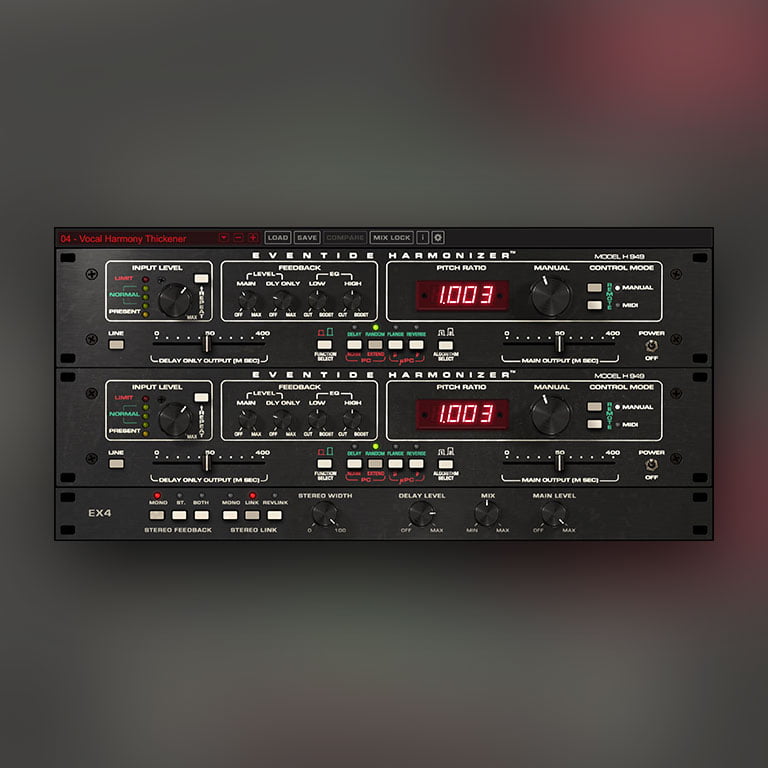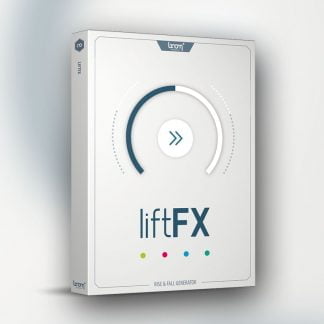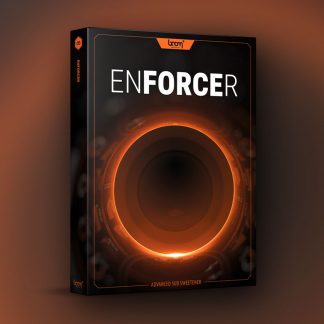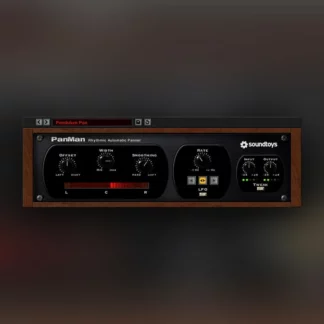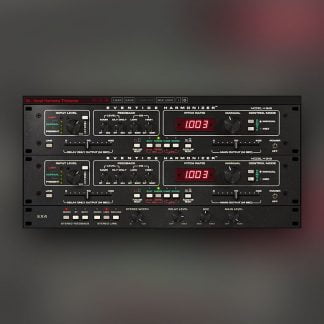Eventide H949 Dual-Harmonizer
Original price was: €199.00.€49.00Current price is: €49.00.
De-Glitched Pitch Shifting with Unique Flange, Reverse & Random
The Eventide Clockworks H949, which debuted shortly after the H910, was the world’s first ”de-glitched” pitch shifting product – and may even have been the world’s first multi-effect audio product. It not only offered 3 octaves of pitch change but also featured Micro and Random pitch, Delay only, Flange and unique Reverse modes. The Eventide H949 Dual Harmonizer® is two independent units with cross-feedback and stereo width controls for amazing stereo effects. recreates two H949 units running in parallel, an application that was frequently used in the hardware version to create doubling effects.
How does the H949 Dual-Harmonizer work?
Besides the obvious processing features such as pitch change, delay and flanger, the H949 can also be used in all kinds of unique ways. It makes time expansion and compression possible. It also allows you to select one of two pitch change algorithms in order to support optimal pitch change with a variety of source material. Algorithm 2 is generally glitch free, but will add varying degrees of coloration to the signal, and is more suitable for extreme pitch ratios. Algorithm 1 may cause glitches with increasing frequency as the pitch ratio deviates from 1:1, but is generally more appropriate for smaller pitch ratios. Unlike Diatonic pitch shifters, the pitch shifting in the H949 is in the feedback loop, allowing for arpeggiated repeats.
The H949 Dual offers controls and functionality that allow it to recreate two H949 units running in parallel. Here are some of the ways that the H949 Dual Harmonizer controls can be used.
Stereo Feedback – The three buttons in this group allow you to control the feedback routing between the two H949 units. In ”Mono” mode, the output from a single unit only feeds back into that unit. In ”Stereo” mode, the output from the top unit feeds back into the bottom unit, and vice versa. In ”Both” mode, the output of each unit feeds back into both itself and the other unit.
Stereo Link – The three buttons in this group allow you to more easily control the plug-in, by linking corresponding controls in the bottom and top units. In ”Mono” mode, all controls can be set independently. In ”Link” mode, changing a control on one unit will cause the corresponding control on the other unit to follow that change. ”Reverse Link” mode behaves much like ”Link” mode, but changing the Pitch Ratio on one unit will cause the other unit’s Pitch Ratio to move in the opposite direction. This is especially useful for creating stereo detuned and doubling effects.
Stereo Width – Allows you to control how ”wide” the output of the plug-in is, from mono to full stereo.
Features
- Multi-effects Harmonizer with de-glitching
- Randomized and reversed delays
- MicroPitch for small pitch intervals
- Reverse pitch shift
- Combination digital delay, pitch changer, and all-around special effects unit
- Includes H949 Dual for stereo widening, doubling, and reverse link pitch alteration

